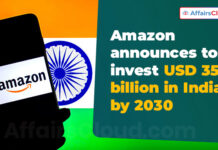Important points:
- Mobile phones have helped India skip adopting two existing technology platforms which otherwise would have cost billions of rupees and decades of time: Fixed line phones and Fixed cable Internet.
- Many people in India are buying a mobile phone and using internet on it without ever having a fixed phone or a home internet connection.
- Only 5% of Indians have a Personal Computer(PC) so majority use mobile phones to surf the internet
- Consumers derive enormous value from mobile and their perceived economic value derived from a mobile phone far exceeds its cost. According to Boston Consulting Group, in emerging countries like India, the consumer-reported value of mobile exceeds 40 per cent of average income
- Cheaper and powerful mobile technologies has enabled this enormous growth in mobile sector
Statistics:
Phones:
- Presently India has 970 million(m) mobile phone subscribers, by 2018 it will have cross 1200 m subscribers
- No: of Mobile phone users in India in 2015: around 620 m(more than half of the population), it would touch 770 m by 2018
- India will have 200 m smartphone users by 2016, beating US to reach 2nd position
- Feature phones are not dead though: In 2014, 180 million feature phones were shipped, more than twice the number of smart phones. Feature phones can also be used in innovative manner, especially for money-transfer mechanisms such as Vodafone’s M-Pesa.
Internet
- India will have more than 500 million Internet users by 2018. The first 100 million internet users took 20 years; the next 100 million will take three years; and the 100 million after that could take within a year.
- In two years India will have the largest Facebook user base on mobile
- The demographics of internet users is also changing: The last 100 million users will be drastically different from the first 100 million on multiple dimensions: they will be older, more rural, more female, more mobile-led, and more vernacular.
An ‘Appy’ India:
- Indians adopting apps on their phones in to their lives with great speed. There seems to be an app for everything
- Some innovative Apps: Tracking pollution in the Ganga (Bhuvan app), Alerting a Kerala snake catcher (King Cobra)
- Common Apps: Music (Wynk), commerce (Paytm), education (Coursera), groceries (BigBasket), cab (Uber), self-drive cars (Zoomcar), retail (Flipkart), price discovery (OLX), friends (WhatsApp), social networking (Facebook), professional networking (LinkedIn), security (VithU).
Trends in Rural India:
- With the single TV in a rural home being generally used for consuming entertainment, Whatsapp and Facebook are becoming the ways to consume news
- Rural mobile Internet users total about a third of their urban counterparts
- The mobile has become an important tool to help people keep track of issues like immunisation
- Rural healthcare: There is a shortage of doctors, trained healthcare workers can access healthcare information and get detailed information on their phones. Telemedicine is also beginning to catch up. A number of tech providers, hospitals are now investing in this area
E-commerce:
- Though security is still an issue, with perceptions divided on how safe it is to share credit card details online, solutions like cash on delivery has ‘fixed’ this problem largely
- Myntra has already gone app only and Flipkart plans to shut its site and offer its services from mobiles from next year
- India has the highest percentage(around 40%) of total e-commerce sales carried out through mobiles
- Small and medium enterprises in emerging markets such as Brazil, China, and India have taken to mobile technologies faster than their counterparts in the developed world.
Challenges:
- Though one can buy a smartphone for less than Rs 2000 in India, because of vast poverty, the mobiles need to become more cheaper to have universal reach
- Security of mobile phones is a big issue, especially for cash-transaction usage
- Broadband speeds for mobiles in India is one of the lowest in the world, need to adopt 4G speeds quickly
AffairsCloud Recommends Oliveboard Mock Test
AffairsCloud Ebook - Support Us to Grow
Govt Jobs by Category
Bank Jobs Notification





